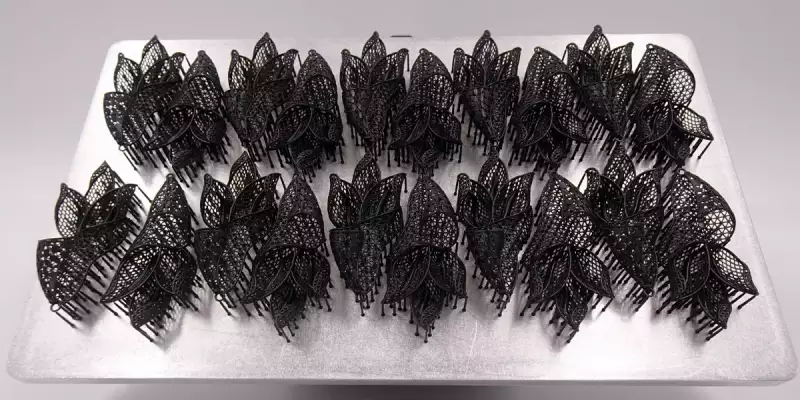FACTORS THAT WEAKEN BUILD PLATFORM ADHESION IN 3D PRINTERS AND THEIR SOLUTIONS
BUILD PLATFORM ADHESION
In 3D printing, the ability of a 3D print's first layer to firmly stick to the build surface or print bed is known as "build platform adhesion." It is an essential step in the 3D printing process because it guarantees that the printed object will remain securely in place while the printing is being done. Proper build platform adhesion is essential for preventing issues such as warping, lifting, or misalignment of layers.
Printing technologies like SLA, LCD, and DLP utilize VAT polymerization. Upon the exposure of UV Light on the Build Platform each layer is cured on it. Depending upon the size and geometry of the Printed part, the part is stuck on it firmly ensuring the whole model is built layer by layer. If any of the areas is detached from the platform during printing. The whole printing job will fail.
WHAT IS VAT PHOTOPOLYMERIZATION?
All types of VAT photopolymerization printers employ special resins called photopolymers as the printing medium. Photopolymerization is the process by which liquid photopolymer molecules rapidly bind and cure into a solid form when exposed to certain wavelengths of light.
When using vat photopolymerization, the majority of 3D printers store liquid photopolymer in a vat or container, with the build platform partially immersed at the liquid's surface.
Vat polymerization methods are useful for producing parts with smooth surfaces and precise details. They are therefore ideal for a range of jewelry, dental and medical applications, and injection molding prototypes. A major limitation of vat polymerization is the brittleness of the pieces that are produced.
FACTORS THAT AFFECT AND WEAKEN BUILD PLATFORM ADHESION IN 3D PRINTERS AND THEIR SOLUTIONS
There are several factors that directly or indirectly affect the adhesion capability of the platform. In 3D printing, platform adhesion is essential to ensure that the printed item stays firmly attached to the build platform during the printing process. Many things may weaken platform adherence, which can result in print troubles or failures. The following frequent causes are listed along with potential fixes:
Uneven Calibration
If the Platform is not properly calibrated such that it is not even, then adhesion will be weakened in some areas and will be too much in some areas. So it is utterly important to make sure that the Calibration is even and the platform is leveled on all corners.
Resin
Some Resins are by design not capable of providing good adhesion to the platform such resins are generally good and printing the rest of the layers of the 3D model but only lack at the base curing of the platform. With such resins specially formulated primers are used. Before the printing primer is applied to the platform which provides good strength to the base layers on the build platforms.
Cold Temperatures
Most of the build platforms are made of Aluminum. The micro-pores enable the resin to hold the base layers. But if the surrounding temperatures are too cold. These pores get closed. Aluminum is a good conductor of both Heat and Cold so larger platforms trap the cold very easily. To counter this problem some 3D Printer manufacturers, provide internal heating systems. 3D Printers are hard coded to dip the platform in hot resin so all pores open for effective adhesion.
Clogging
If the Build platform is not cleaned every day with alcohol, then residue resin starts curing on it. The micro-pores on the aluminum build platform are clogged with cure resin. The curing on the base layers keeps becoming weak and eventually layers won’t stick at all. To overcome this problem, build platforms are generally layered or treated with sandblasting.
Platform Damage
If the shape of the platform is deformed due to fall or improper handling this will also cause adhesion problems due to uneven surface. To resolve this problem, the build platform needs to be roughened on a flat surface with Sandpaper or in some cases the platform needs to be changed.
Poor Surface Preparation:
Poor adhesion might result from a filthy or poorly prepared surface. If necessary, use adhesion aids after thoroughly cleaning the build platform. Common adhesion aids include glue sticks, hairspray, or specialty 3D printing adhesion solutions.
Print Speed:
Excessive printing speed might result in poor adherence, particularly in the first few layers. To improve adherence, lower the print speed for the first few layers. If you need to, gradually raise the pace for the next layers.
Wrong Printing Profile
Sometimes Base curing parameters of the 3D Printer profile are not set according to the requirement of the Resin or not according to the Exposure intensity hence the base layers either don’t stick or have very loose adhesion. To counter this either the curing time or the exposure intensity of the 3D Printer shall be increased.
In summary, obtaining strong build platform adhesion is essential to effective 3D printing. The factors that affect adhesion are very important in deciding how 3D printing turns out. The accuracy and careful handling of these parameters can greatly improve the initial layer's bond to the build platform's durability. When the build platform adhesion is optimized, it helps prevent common printing problems like warped or lifted corners, which can result in failed prints. It is essential to understand and adjust these factors based on the specific requirements of the filament being used and the 3D printer model.
Protospeed is a top producer of quality castable resins and fast 3D printers for the jewelry industry. Our 3D printers can print at up to 65 mm/hr and 50 µm layer thickness. We at https://protospeedfze.com/ are your reliable partner in attaining high-speed 3D printing success. This is due to our unwavering dedication to innovation, quality materials, and all-encompassing service.

